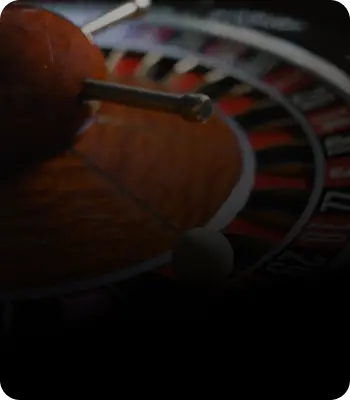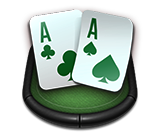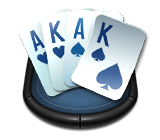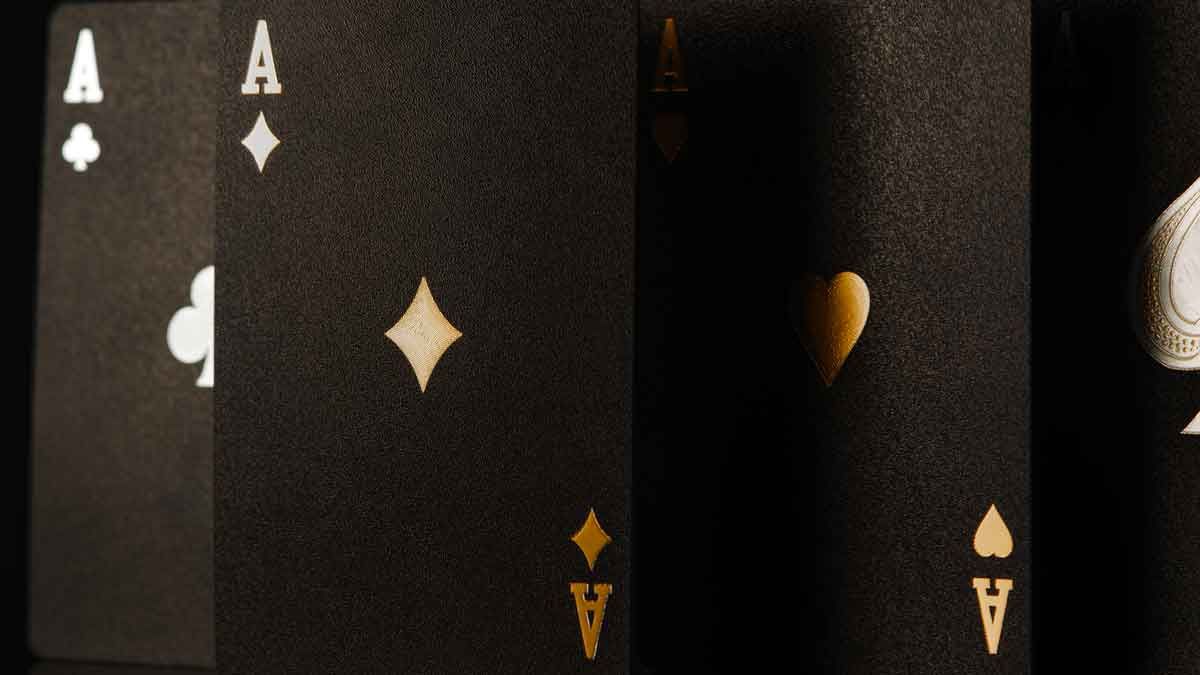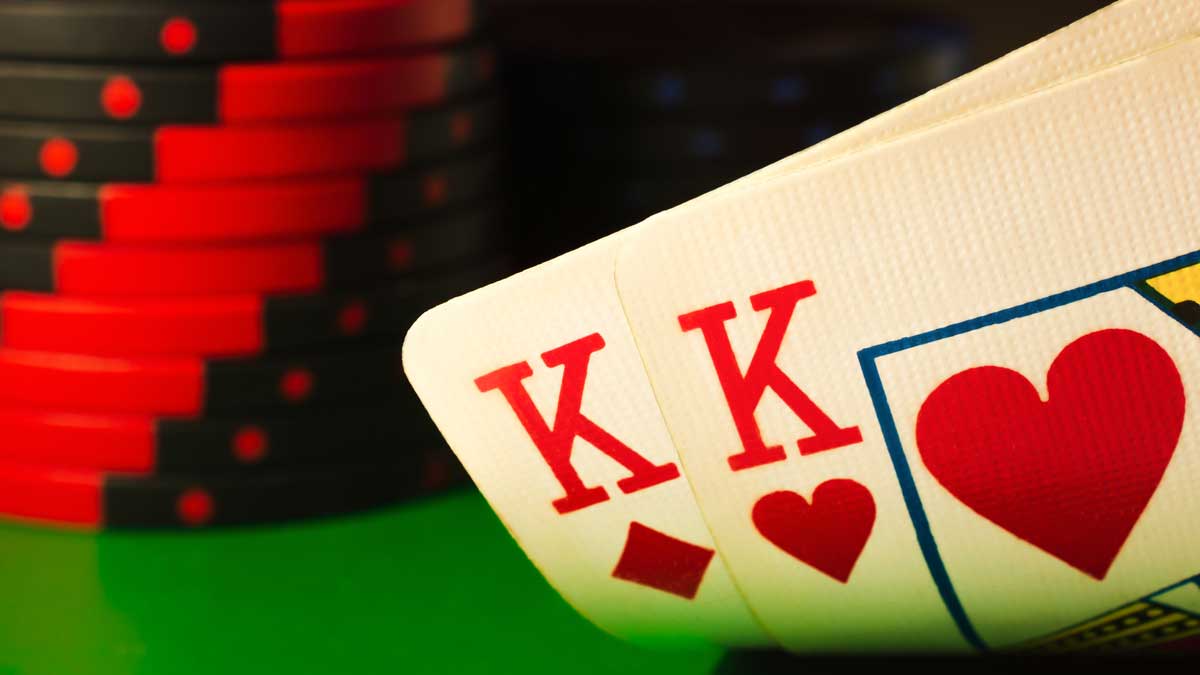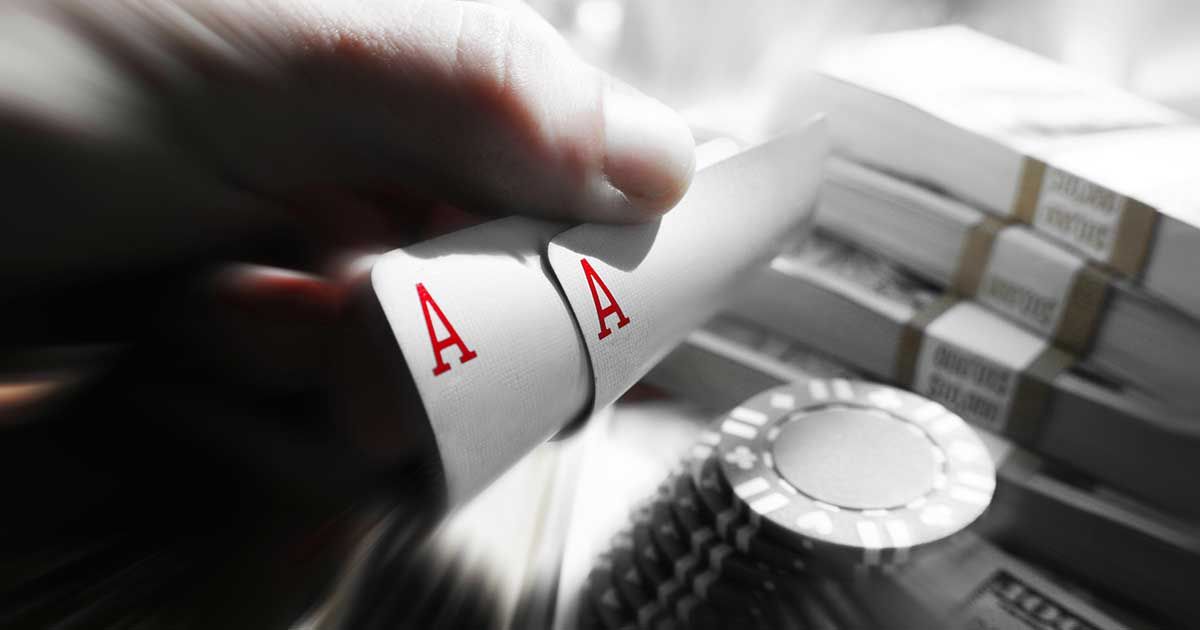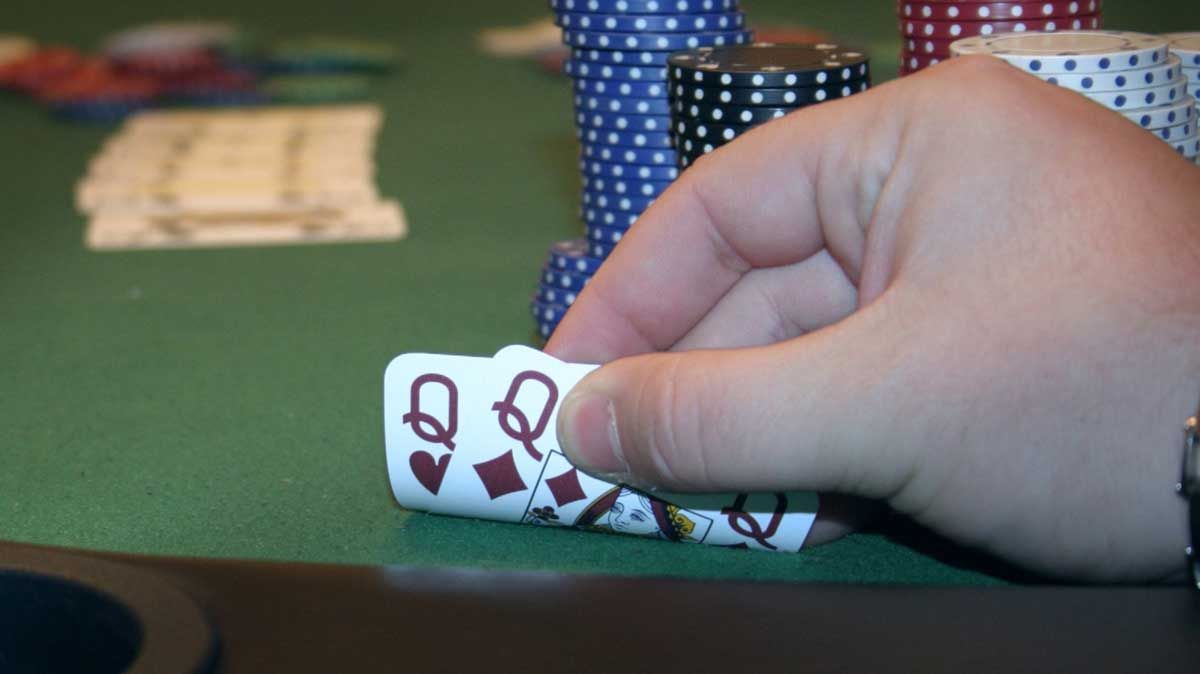
Who doesn't love holding a pair of Queens? As the third biggest pocket pair in No Limit Hold'em, pocket Queens should be one of your strongest performing hands and you should expect to win quite often with the “Ladies”. Yet many people struggle to play this hand properly, especially on tricky flops featuring an Ace or King.
In most scenarios, though, pocket Queens are one of the most powerful hands you can have in Texas Holdem, and if you know how to use it properly, chances are you're going to win the pot! The only stronger hands in most forms of poker are pocket Kings and pocket Aces.
In this article, we’ll take a look at how to play pocket queens more effectively to increase your success rate.
The Basics of Pocket Queens
Once you draw pocket queens, you should feel quite confident in your game pre-flop. As we will explain later on in this article, you should always raise pre-flop when holding pocket queens -- it's a fantastic hand, and the odds that some other player is holding onto a pair of Kings or Aces are not that high. Essentially, there is very little risk in the pre-flop stage with two Queens, so there really is no point playing it safe then.
Aside from a King-King or Ace-Ace combination, another hand you should be wary of when holding pocket Queens is the Ace-King combo. A pair of Queens still has an advantage to these cards, but it is a rather small one, at 54%. Why is that? Well, if they're holding an Ace and a King, then your opponent's range of possibilities is greater post-flop when the rest of the cards get laid out on the table.
Both the Ace and the King are overcards to the Queen, meaning they rank higher, and seeing as there are potentially three Aces and Kings left in the deck (as long as no other player drew them), that can lead to a very tense post-flop period. The clash between a player holding pocket Queens and the Ace-King hand is often called a coin flip, precisely because of these near-50/50 chances of winning for each player.
All in all, pocket Queens are a great hand for Texas Hold'em newcomers -- it is a very strong hand in and of itself, but it is also easier to lay down than kings or aces.
Playing Queens Pre-Flop
Given the strength of this pocket pair, you should always raise preflop if it's an unopened pot. Even against an opened pot, you should look to 3-bet 100% of the time.
There is little point trying to get tricky before the flop with a pair of Ladies. All you’re going to do is offer improved pot odds for someone who is tempted to play a hand like suited connectors. You’re just asking to be outdrawn, so always look to thin out the field or take the pot down right away.
In terms of 4-betting, you’ll want to do so most of the time. But proceed with caution when in an early position against a 3-bet from the Small or Big Blinds. Here, your opponents’ hand ranges are fairly polarised. Remember, you’ll be out of position post-flop, and when that happens, you could be looking at a monster, so you can justify a call at this point.
As you can tell, pocket Queens is a very simple hand to play pre-flop. Postflop, however, is another matter.
How To Play Pocket Queens On Boards With Low Cards
Most flops are going to look pretty good for pocket queens. We’re only ever truly worried about an Ace or a King, which we’ll cover in the next section. So, if it’s checked to us, we should bet 100% of the time.
Yes, it’s possible that our opponent also has a pocket pair and has flopped a set, but such situations are rare. What’s more, we’re going to find out pretty quickly when our opponent plays back very hard.
Even a flop like J-J-9 shouldn’t concern us. It’s certainly possible that they are involved with a hand like J-T suited, especially if they opened and then called a 3-bet. Every once in a while, we will run into such annoying situations. But we cannot constantly worry about these rare spots. Instead, we should be as aggressive as possible to extract the maximum value.
What To Do With Queens On Scary Flops
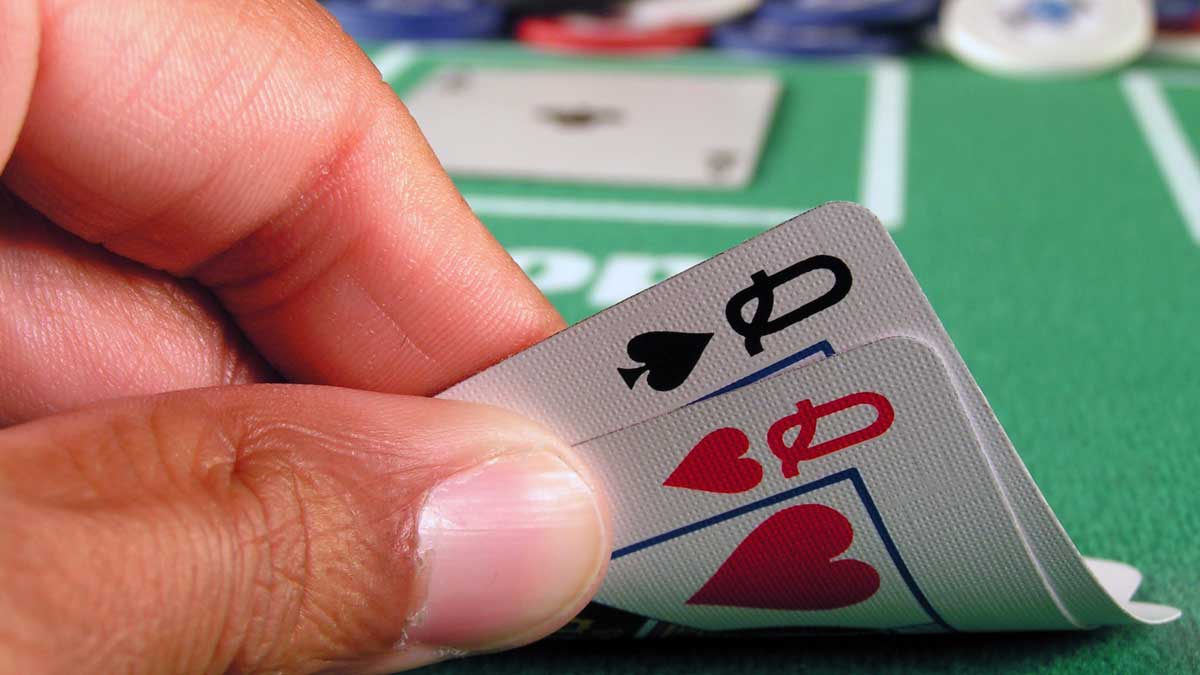 Right, let’s now address the main problem that people face when handling pocket Queens in poker. What do we do when an overcard flops?
Right, let’s now address the main problem that people face when handling pocket Queens in poker. What do we do when an overcard flops?
First of all, we must never simply assume that we are now behind. Only a small part of their range contains either an Ace or a King. They could easily be holding a pocket pair from J-J or below, in which case we are miles ahead. If the flop is K-7-3 for instance, we certainly don’t need to worry about hands like A-Q suited and J-T suited.
With that in mind, we should still look to get value out of what remains a premium holding. However, we must try to prevent the pot from getting out of control, just in case.
A skilled poker player is not going to call our bets on all three streets with an inferior hand. So, if we bet to try and get two streets worth of value instead of three, that’s fine. But more importantly, those bets will help us to find out where we stand.
Hand Examples
Imagine if we were to 3-bet pre-flop from the button and found one caller in middle-position. Our opponent checked to us on a flop of K-8-7. In this situation, there’s potential here for straight and flush draws. Naturally, we don’t want to give our opponent a free card. The right thing to do here is to bet on the flop.
Let’s say the opponent called and the turn was a brick, the 2♥️. Here, we can bet again, and if we find a call, we can think about slowing down. If the opponent checked on the river, you could simply check back. If they bet, having check-called all the way, we should seriously consider the chance that they could be looking to trap us.
Another example might be a flop like A♦️-6♠️-2♥️, where there is an overcard. However, this is pretty much a dry board. In this situation, if our opponent checked, it would be much safer to check back. If they bet the turn, that would be another story. We would have to assess the situation. But if they checked again, it would be safe to bet both streets for value.
Frequently Asked Questions
Q: How likely am I to draw pocket queens?
While odds are important to know when playing any kind of poker, you should never get too attached to them, especially as a newcomer to the game. Remember: poker is a game of chance. In other words, the draws depend solely on randomness and your own luck. With each new game, you are as likely to receive a pocket pair as you are to get a terrible hand (as long as you're playing with a fair dealer, that is).
Of course, the numbers tell a different story. The odds to get dealt pocket Queens or higher are 73 to 1, meaning that you've got a 1.6% chance of scoring this hand (or a stronger one) when starting a game. The odds of getting any specific pair are 220 to 1, or 0.5%.
Q: When should I fold with pocket queens?
Earlier on in this article, we already mentioned that with pocket Queens, you should always raise preflop. Consider the odds outlined in the previous answer. With such low chances of receiving a strong pair, there is very little chance that any player currently at the table will have a better hand than your pocket Queens.
Things get a little more complicated after the first flop. However, even if an overcard or two get drawn during that stage, it does not necessarily mean that it's time to fold. Watch your opponents carefully and exercise pot control. Remember that you have the third-strongest hand in the game -- re-raising, when you're in an early position, is a good move.
The only time you should consider folding is when you're in a late position, all the other players seem to re-raise vigorously, and there are overcards laid out on the table. That might be a sign that you're in over your head. Of course, it's poker, so you can always just bluff your way to victory.
Q: Are pocket queens a power hand?
You might hear other Hold'em players refer to "power hands" when talking about the game. This is a fairly common expression, and it refers to particularly strong hands, i.e. those for which the strategy is almost always to keep betting and re-raise the pot. Pocket Queens is definitely a power hand, and so are pocket Kings and pocket Aces. You can also throw in the Ace-King combination in that category -- even though they're not a pairing, they are a combination of two of the strongest cards in the game and can put a player in a great position after the flop.
Q: What are some other strong pocket pairs?
Generally speaking, getting a pocket pair is always a good thing in Texas Hold'em, if the card values are a Ten or higher. The odds of getting two of the same cards are very low, and so even if you get pocket Tens, you are in a good situation to raise the pot preflop. You can also draw pocket Jacks, Aces, or Kings.
What are the worst hands to draw in Hold'em?
We've discussed some of the strongest hands in Texas Hold'em at length, but to be completely fair, you're going to receive some of the weaker card combinations much more frequently. Here are five of the worst hands in Texas Hold'em. All of them are offsuit, which means that each card belongs to a different suit.
2-6
2-7
3-8
2-9
2-8
We're not going to sugarcoat it here: if you find yourself holding any of the above card combinations, you should cut your losses and fold, especially if you're a new player who's not so confident in bluffing and out-raising the other players.
Conclusion
As the third strongest starting hand in Texas Hold’em, playing pocket queens is actually quite straightforward. You have a monster, so play it accordingly. Look to extract as much value as possible, especially when you are playing the hand in a No-Limit game, and don’t fear the rare situations where you could be outdrawn. The only exception is when the opponent gives you sufficient reason to believe they’ve overtaken you..













